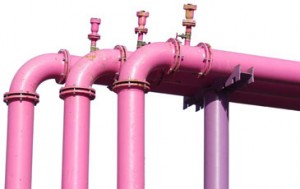 The “soft path for water” defines a new approach to managing water resources. The soft path begins with the recognition that with few exceptions people do not want to “use” water – they want complex combinations of goods and services.
The “soft path for water” defines a new approach to managing water resources. The soft path begins with the recognition that with few exceptions people do not want to “use” water – they want complex combinations of goods and services.
People want to drink and bathe, grow food, produce and consume goods and services, and otherwise satisfy human needs and desires. While many of these things require water, achieving these ends can be done in different ways, often with radically different implications for water. The soft path recognizes that there are two primary ways of meeting water-related needs, or more poetically, two paths.
The “hard” path relies almost exclusively on centralized infrastructure and decisionmaking using technology and institutions developed in the 19th and 20th centuries: large dams and reservoirs, pipelines and treatment plants, public water departments and agencies and private companies. The objective of the hard path is to deliver water, mostly of potable quality, and sometimes to remove wastewater.
The “soft path” has a different, broader set of goals: the delivery of water-related services matched to users’ needs and resource availability. The soft path also uses centralized infrastructure, but as just one in an integrated series of tools. It also seeks to take advantage of the potential for decentralized facilities, efficient technologies, flexible public and private institutions, innovative economics, and human capital. It strives to improve the overall productivity of water use rather than seek endless sources of new supply. It works with water users at local and community scales and seeks to protect the critical ecological services such as nutrient cycling, flood protection, aquatic habitat, and waste dilution and removal that water also provides.
The soft path is distinguished from the traditional, hard path for water in six main ways:
- The soft path directs governments, companies, and individuals to focus on sustainable ways to satisfy the needs of people and businesses, instead of just supplying water. People want clean clothes or to be able to produce goods and services – they do not care how much water is used and may not care if water is used at all.
- The soft path leads to water systems that supply water of various qualities for different uses. For instance, storm runoff, greywater, and reclaimed wastewater are well-suited to irrigate landscaping or for some industrial purposes.
- The soft path for water recognizes that investing in decentralized infrastructure can be just as cost-effective as investing in large, centralized facilities. There is nothing inherently better about providing irrigation water from a massive reservoir instead of using decentralized rainwater capture and storage.
- The soft path requires water agency or company personnel to interact closely with water users and to engage community groups in water management. The hard path, governed by an engineering mentality, is accustomed to meeting generic needs.
- The soft path recognizes that the health of our natural world and the activities that depend on it (like swimming and tourism) are important to water users and people in general. Often times, the hard path, by not returning enough water to the natural world, harms other water users downstream.
- The soft path recognizes the complexities of water economics, including the power of economies of scope. An economy of scope exists when a combined decision-making process would allow specific services to be delivered at a lower cost than would result from separate decision-making.
Source: http://pacinst.org/
Dear User/Visitor! Please, answer on our questions: tick off one of the positions – your answer will make us able to improve our site and make it more interesting and useful!

